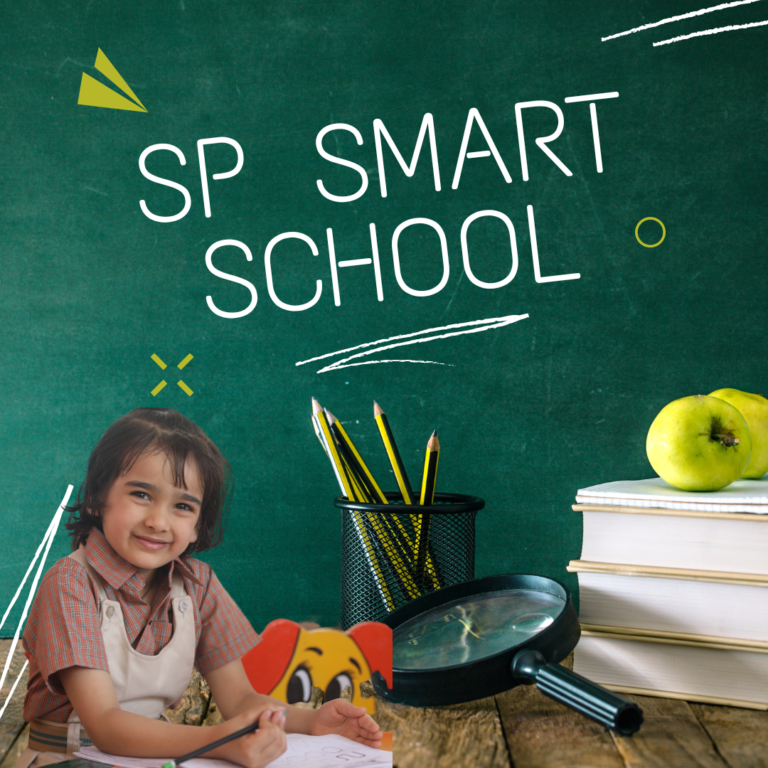When online courses are combined with in-person sessions, a new learning paradigm known as the hybrid schooling system emerges, in which students divide their time between a traditional classroom and a homeschool. It combines the benefits of both physical and virtual classrooms, providing students with a win-win situation.
Classrooms used to simply refer to the actual rooms of a school. After the pandemic, this definition shifted. Virtual learning environments are becoming available in schools.
What exactly is a physical classroom?

Physical classrooms provide a face-to-face interactive setting for professors and students. There are various items and equipment in a physical classroom, such as projection screens, blackboards, seats, and desks. The elements of a physical classroom provide a captivating experience for students. Books and classes alone, however, are insufficient to keep students involved. Other variables, such as teachers’ attitudes and, crucially, peers, impact pupils’ classroom interests.
Traditional classroom teaching is, in general, obsolete, and there has been rapid technological advancement over the years. Because the virtual world is booming, students must be exposed to such technologies to keep pace with the course. Furthermore, the pupils do not have enough spare time for self-study and other hobbies. As a result, online learning is essential.
Online education

When students participate in online learning, they learn in a completely virtual environment. With the introduction of the internet in the 1990s, online learning (also known as e-learning) was first employed in remote learning. It enables students worldwide to connect online with academic institutions and other students while working toward a degree or certificate.
The introduction of virtual learning has hampered the educational system. Schooling has generally been done in person, which has restrictions for those who are unable to attend. So, the most obvious advantage of providing learning opportunities online is that you make education available to a far larger number of individuals.
A New Paradigm for Teaching and Learning Online learning
A pedagogical change in how we teach and learn is being catalyzed by online learning. A change is occurring away from top-down lectures and passive students toward a more interactive, collaborative approach in which students and teachers co-create the learning process. The function of the Instructor is modified from “sage on the stage” to “the guide on the side.”
The Advantages of Online Teaching and Learning: Why Online Distance Learning Now?
Online distance learning fulfills the demands of a rising number of students who are unable or prefer not to engage in traditional classroom settings. These students include those who are unable to attend traditional classes, those who are unable to find a specific class at their preferred institution,those who live in remote locations, those who work full-time and can only study during or after work, and those who simply prefer to learn independently.
Students must have access to a computer, the Internet, and the ambition to achieve in a non-traditional classroom to engage in an online course. Online courses offer an ideal means of course delivery that is not limited by time or location, giving access to training at any time and from any location.
Learners discover that the online environment allows them to accommodate education into their hectic schedules. Many of today’s students value the ability to access a course from any computer with Internet connectivity, 24 hours a day, seven days a week.
Some of the main advantages of Hybrid learning include
• Convenience: 24/7 access from any online computer; accommodates busy schedules; no commuting.
• Enhanced Learning: Research shows an increased depth of understanding and retention of course content; more meaningful discussions; emphasis on writing skills, technology skills, and life skills like time management, independence, and self-discipline.
• Leveling of the Playing Field: Students can take more time to think and reflect before communicating; shy students tend to thrive online; anonymity of the online environment.

• Interaction: Increased student-to-teacher and student-to-student interaction and discussion; a more student-centered learning environment; less passive listening and more active learning; a greater sense of connectedness, and synergy.
• Innovative Teaching: Student-centered approaches; increased variety and creativity of learning activities; address different learning styles; changes and improvements can translate to on-ground courses as well
• Improved Administration: Time to examine student work more thoroughly; ability to document and record online interactions; ability to manage to grade online.

Everyone has their own “style” for gathering and organizing information into useable knowledge, and the online environment can be especially well suited to various learning styles and personality requirements. Introverted pupils, for example, generally find computer-mediated communication easier than face-to-face conversation. Furthermore, the online environment supports a less hierarchical approach to training, which caters to the learning needs of those who do not approach new knowledge systematically or linearly. When systematically or linearly implementing many students’ learning styles, they are utilized to their full potential for collaborative learning. Online courses are also well adapted to the needs of independent learners.
Because individual learners have various learning styles or a combination of styles, online instructors should build activities that address many modes of learning to increase the likelihood of successful experiences for each class member. Use a variety of teaching tactics while creating online courses.
However, as previously said, the physical environment influences online learning. Previously, conversations focused on interactions between learners and content, as well as interactions between learners, teachers, and facilitators. Until recently, little thought has been given to one form of interaction: that between the learner and the physical environment.

Because individual learners have various learning styles or a combination of styles, online instructors should build activities that address many modes of learning to increase the likelihood of successful experiences for each class member. Use a variety of teaching tactics while creating online courses
However, as previously said, the physical environment influences online learning. Previously, conversations focused on interactions between learners and content, as well as interactions between learners, teachers, and facilitators. Until recently, little thought has been given to one form of interaction: that between the learner and the physical environment.
Because individual learners have various learning styles or a combination of styles, online instructors should build activities that address many modes of learning to increase the likelihood of successful experiences for each class member. Use a variety of teaching tactics while creating online courses.
Despite the various benefits of online learning, students are still not enduring great results in their exams as their concepts are not clear and self-study without clearing their doubts just leaves them mugging up all the answers which aren’t enough to level up in the exams. Moreover, in some cases, students mental health gets affected to an extreme because they lack concentration and are anxious all time.

The actual definition of Hybrid learning is a type of educational practice in which some students attend class in person while others participate electronically from home. Educators use video conferencing technology and software to teach both remote and in-person students at the same time. Hybrid classes may include asynchronous learning elements such as online exercises and pre-recorded video lessons to supplement face-to-face classroom sessions. When well-planned, hybrid courses combine the finest parts of in-person and online learning, making education more accessible to a wider range of students.
Furthermore, our definition of Hybrid learning is unique and we at SP Smart School have designed a hybrid schooling system that has shown profound results for our students. We follow the SP smart schooling system coupled with hybrid technology that gives our students ample amount of time to reflect on their studies at a deeper level that guarantees them to soar in the exams, be it general exams or competitive exams. We prepare them for every exam and give them all the expert guidance.
We’ve a doubt-solving sessions for our students to get clear all their doubts and make their concepts crystal clear in SP Smart Hybrid Schooling System.

The features of our hybrid course are suited to the learning format, whether in-person or online. SP smart hybrid schooling system is a proactive hybrid system designed for students to excel in their careers by providing a systematic, result-oriented module so that they get a lot of time to self-study, and we claim to give around 1500+ hours of self-study under our expert teachers’ guidance.
Get your child the best education by enrolling in our SP Smart Hybrid Schooling System.





Pingback: Easiest Tips To Overcome Competitive Exam Stress & Anxiety Now – ESPA Learn
Pingback: Online learning: Best practices to follow at home while studying
Pingback: Penta Learning Mode: What You All Need To Know
Very useful ☺️
Sp smart school is not a school. It is our second home because we spend our 8 hours in school and school provide us every study materials students and students does not have to go to tution and that is good for us
Pingback: Hybrid Learning is the future and what it means for your life
Pingback: Hybrid learning: A new chapter for education
Pingback: SP Smart School changed the meaning of education